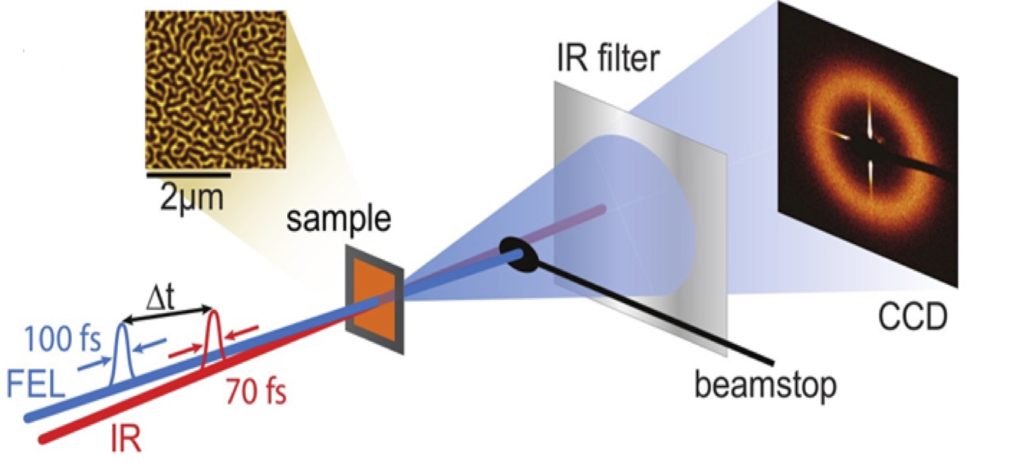Home

Schematics of an XPCS experiment. The protein sample is illuminated by pulses of coherent X-rays yielding a molecular X-ray movie of the underlying dynamics.
Nanoscale fluctuations in soft and hard condensed matter measured with XPCS
Currently, we are pursuing a research program (BIO-XPCS) funded by BMBF with the aim of measuring protein dynamics in crowded environments and during phase transitions. The aim of the project is to mitigate beam damage by novel setups and concepts and measure the dynamics of proteins on length scales of 100 nm down to the hydrodynamic radius of the molecule.

XFEL studies of the interaction of ultra-intense laser radiation with solids
Ultra-intense laser beams interacting with solids can create dense and highly relativistic plasmas that show unique dynamical and structural properties for the duration of a few femtoseconds. Such extreme states of matter exists for example in the interior of stars and other astrophysical objects but are also highly relevant for developing new sources of ion beams e.g. for radiation therapy. In collaboration with the Helmholtz Center Dresden-Rossendorf and the European XFEL we study the possibility to investigate such extreme states of matter using X-ray free-electron laser sources.

Schematics of a pump-probe experiment. The sample is excited with a 70 fs IR pulse. A time delay dt later, the FEL radiation probes the properties of the excited state. The diffraction ring on the camera contains information about the structural properties of the sample.
XFEL investigations of ultrafast surface dynamics in magnetic materials
The properties of magnetic materials can be changed on time scales of 100 fs by external stimulus such as IR laser pulses. We employ resonant magnetic scattering experiments at XFEL sources to investigate the spatial evolution of the spin-system after IR laser excitation. Here we make use of the fact that X-ray photons when tuned to dichroic resonances can probe the magnetic state of a sample. We are especially interested in the spatial evolution of spin densities at surfaces or interfaces of magnetic materials which is currently being investigated in a DFG funded project

Big data analytics
The X-ray science community is facing currently a paradigm shift in terms of data rates and data volumes to be analyzed. Due to the increased brilliance of X-ray sources and due to the technical development of fast and large mega-pixel X-ray detectors the data rates increased tremendously in the last few years. In our experiments, we are facing this problem of the data avalanche now and we employ modern tools of big data analytics to analyze our data.
Aktualisiert um 13:42 am 25. October 2021 von gg521



